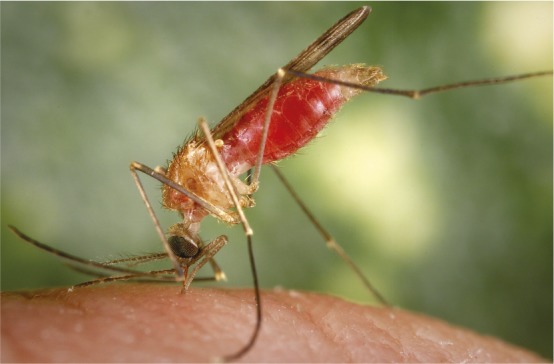Genomic history of Italian brown bears

Apennine bear. Photo by Valentino Mastrella and image courtesy of Archive from the Abruzzo, Lazio e Molise National Park.
Apennine bears are a critically endangered population of approximately 50 Italian brown bears that live in the central Apennine Mountains. Apennine bears (Ursus arctos marsicanus) are separated from other bear populations by several hundred kilometers. Andrea Benazzo et al. (pp. E9589–E9597) explored genomic variation and evolutionary divergence in Apennine bears. The authors sequenced the full genomes of six Apennine bears and six other European brown bears. The authors estimate that Apennine bears were separated from other brown bears during the Neolithic Period, resulting in a 40-fold decline in the Apennine population; Apennine bears may have become isolated due to human expansion and land clearing, the authors suggest. The genetic analysis indicates that Apennine bears are highly inbred with a complete loss of variation in the mitochondrial genome and along long stretches of the nuclear genome. Random drift appears to have fixed several deleterious mutations, but also led to unique features such as small size, distinctive cranial morphology, and reduced aggressiveness, compared with other bears. In combination with a lack of competitors, a nearly vegetarian diet, and low aggressiveness, peaks of high variation in genes associated with the immune and olfactory systems may have helped Apennine bears avoid extinction, according to the authors. — L.C.
Synergistic malaria vaccines

Anopheles gambiae. Image courtesy of the CDC.
In recent years, progress has been made in reducing malaria mortality. However, malaria remains a significant global public health challenge in part due to the emergence of malaria parasites resistant to current frontline antimalarial drugs. A highly effective, strain-transcending vaccine would be a useful tool for malaria elimination. Leyla Bustamante et al. (pp. 12045–12050) evaluated a panel of 29 blood-stage antigens from Plasmodium falciparum, a deadly human malaria parasite. The authors used antibodies to systematically screen the antigens for vaccine candidates in two genetically diverse parasite strains in vitro. The screen identified several antigen targets that produced a synergistic effect in blocking erythrocyte invasion, a critical stage of malaria parasite development when the parasite is vulnerable to antibody-directed inhibition. Related immunoepidemiological data from an endemic population in Mali mirrored the in vitro findings and revealed that protection from febrile malaria as well as reduced malaria risk were associated with antibodies specific to certain combinations of the antigens. In vitro video microscopy studies of erythrocyte invasion indicated that the most effective antibody combinations targeted multiple stages of invasion simultaneously. According to the authors, the findings might have implications for the development of next-generation malaria vaccines. — C.S.
Maternal response to infant cries

Woman holding a baby. Image courtesy of Pexels/Tracey Shaw.
The extent to which human caregivers are biologically programmed to respond to their infants’ cries remains unclear. Marc Bornstein et al. (pp. E9465–E9473) observed the behavior of 684 mothers, on average 27 years of age, with infants approximately 5 months old in 11 countries, and found that across all countries, mothers preferentially responded to their infants’ crying by picking up and holding the infant, and by talking to the infant. Based on these observations, the authors hypothesized that infants’ cries would elicit common responses in the brains of new mothers from different cultures. The authors conducted fMRI experiments involving 43 mothers in the United States, on average 33 years of age, with 3.5-month-old infants, and 44 Chinese mothers, on average 30.5 years of age, with 7.6-month-old infants. In both sets of mothers, the sound of infants’ cries activated the brain’s supplementary motor area associated with the intention to move and speak, Broca’s area and the superior temporal regions associated with processing speech and complex sounds, and midbrain and striatal regions associated with caregiving. According to the authors, the results suggest a neurobiological and evolutionary basis for the human maternal response to infants’ cries. — B.D.
Assessing pluripotency of rat embryonic stem cells
Pluripotent embryonic stem cells (ESCs) can give rise to whole organisms through an experimental process called tetraploid complementation. Tian-Da Li et al. (pp. 11974–11979) used tetraploid complementation to test the pluripotent potential of rat ESCs and determine whether ESCs from species other than mice can give rise to whole organisms. The authors derived naïve pluripotent ESCs from rats and found that at very early cell culture passages the ESCs could produce live fertile offspring through tetraploid complementation. However, rat ESCs quickly lost their pluripotent abilities after a few more in vitro passages. The authors found that several imprinted genes in the rat ESCs were differentially expressed between early and late passage, and the ESCs experienced genome-wide demethylation during culture, including in imprinting control regions. The authors suggest that the loss of genomic imprinting could underlie the loss of developmental potency of the rat ESCs during passage in cell culture. The study suggests that the tetraploid complementation test for pluripotency could be used to assess pluripotency in other species. The results also reveal species-specific differences in pluripotency regulation and maintenance, with potential implications for deriving naïve pluripotent stem cells from other species, including humans, according to the authors. — S.R.
New York City flood risk from tropical cyclones

Stormy seas crash into a pier along the US northeast coast.
Future flood risk due to tropical cyclones depends upon both future sea-level rise and changes to storm surges. Andra Garner et al. (pp. 11861–11866) estimated coastal flood risk in New York City through the year 2300 using a combination of sea-level rise projections, simulated tropical cyclones, and storm-surge models. The models identified projected sea-level rise at New York City as the major driver of increasing flood risk. Although storm intensity was projected to increase with time, simulated storm tracks at the latitude of New York City also shifted farther offshore with time, moderating the effect of storm intensity on surge. Mean overall flood heights were projected to be 0.7–1.4 m greater than the 1970–2005 average by the end of the current century, and 2.4–13 m greater by the end of the 23rd century. The return period for a 2.25-m flood, which was approximately 500 years prior to the year 1800, was estimated to be approximately 25 years at present, and was projected to further decrease to approximately 5 years within the next three decades. The study examines the impact of sea-level rise on future flood risk for New York City, according to the authors. — B.D.


